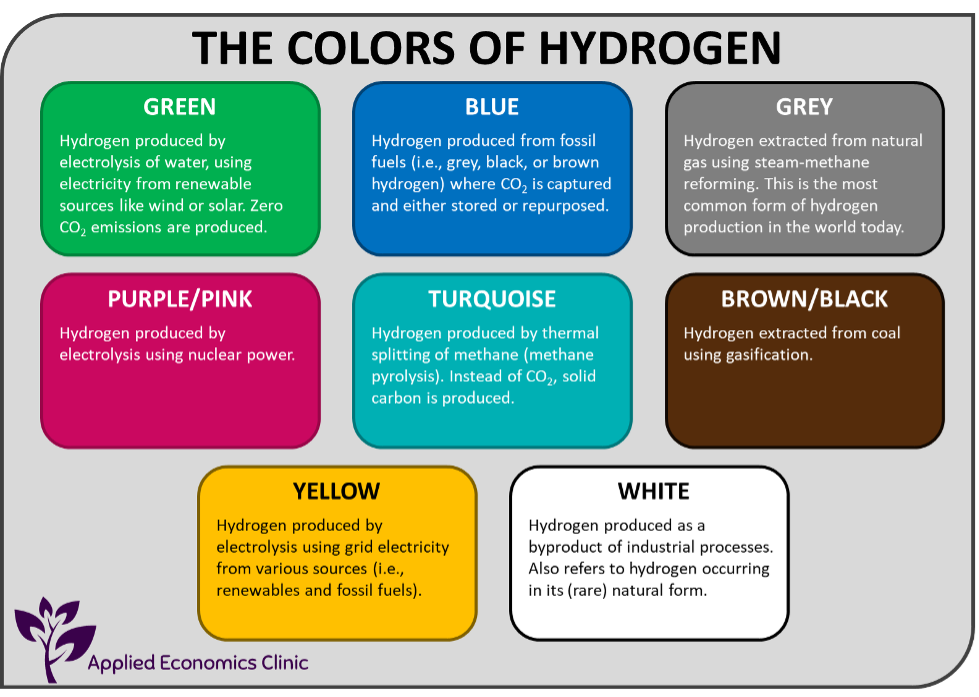The appropriate role of hydrogen in achieving global climate goals—especially in hard to decarbonize sectors—is an important area for consideration in today’s climate plans. Although hydrogen itself is a zero-emission fuel, it can result in substantial upstream greenhouse gas emissions depending on the method used to produce it.
Hydrogen is an energy carrier, not an energy source. Hydrogen is produced from an energy source through various processes such as electrolysis, steam methane reformation, or gasification using either fossil fuels directly or electricity produced from renewables, fossil fuels or nuclear. Not all methods of hydrogen production are equal when it comes to climate impacts. Several categorization systems exist to distinguish between hydrogens made from different fuel and electric sources. For example, the North American Council for Freight Efficiency (NACFE) categorizes hydrogen into different “colors” based on initial energy source and production process.
A 2018 policy briefing from the Royal Society reports that about 95 percent of global hydrogen production is sourced from fossil fuels including:
Grey hydrogen extracted from gas using steam methane reformation,
Brown/black hydrogen extracted from coal using gasification.
Other types of hydrogen are starting to gain traction as various industries work to decarbonize, such as:
Green hydrogen produced by electrolysis of water, using electricity from renewable sources such as wind or solar resulting in zero carbon emissions, and
Blue hydrogen produced from fossil fuels (i.e., grey, black, or brown hydrogen) where carbon dioxide is captured and either stored or repurposed.
The industry group that promotes hydrogen use produced a study suggests that a combination of green and blue hydrogen can meet the world’s hydrogen demand and be cost competitive compared to grey hydrogen (fossil gas derived hydrogen) by 2035.
Utilities across the United States (and around the world) claim that green hydrogen has an important role in decarbonizing their future gas supply and meet local and state climate goals. In theory, hydrogen could be injected into existing gas pipelines to make up a small percentage—5 to 15 percent—of the total gas volume.
The U.S. Congressional Research Service has found that major infrastructure upgrades will be needed before we see a higher share of hydrogen blended with conventional gas. Hydrogen molecules are smaller than methane and therefore more likely to leak through pipe imperfections and even permeate gas pipelines; hydrogen can also eat away at common materials used for gas pipelines.
Hydrogen may have a role in a decarbonized future, but there are substantial technological and infrastructure challenges to its use in heating and providing electricity. Hard to decarbonize processes or sectors (e.g., transportation, high-heat industrial equipment, etc.) may benefit the most from utilizing hydrogen to achieve greenhouse gas reductions.



